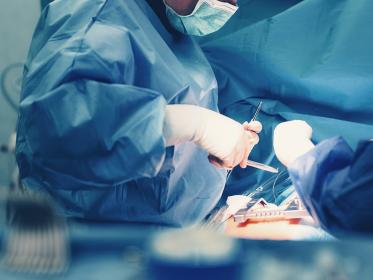Overview
When a person is unable or unwilling to safely consume food sufficient to support good health, they may need surgical nutrition. A feeding tube, may be surgically placed within the stomach for direct nutritional support. This tube bypasses the mouth and esophagus, instead feeding food directly into the stomach via a small incision in the abdomen. Our general surgery team is highly trained and experienced in surgical nutritional support and skilled in the administration and management of this relatively simple procedure.
Did you know that feeding tubes are designed to last for long-term use? While some patients only require surgical nutrition for a short period of time, others require long-term use of a tube. In most cases, a feeding tube will last for many months and in some cases, a year or more, before needing to be replaced.
Surgical Nutrition FAQs
Which patients may benefit from surgical nutritional support?
There are many reasons a patient might benefit from feeding tube placement. Most commonly, surgical nutrition is provided to individuals who are unable or unwilling to consume enough food by mouth to maintain adequate health. Other people who might require a feeding tube include those who are unable to swallow correctly or who breathe in (aspirate) their food when chewing and swallowing. Feeding tubes are also sometimes placed into the stomachs of babies who are born with certain birth defects, including abnormalities affecting the mouth, esophagus and stomach.
What should I expect during a surgical nutrition procedure?
Most tubes can be surgically placed in under an hour. Patients are typically sedated and given a local anesthetic to provide comfort during the procedure. Using a lighted camera placed through the mouth and into the stomach (endoscope), the surgeon will identify the tube insertion site. A small incision will be made in the abdomen to make room for the feeding tube.
What happens after the placement of a feeding tube?
Following the procedure, the feeding tube is taped to the abdomen and the incision site is dressed with a gauze dressing. Patients or their caregivers are given instructions for caring for the tube and the insertion site. It is normal to experience some soreness or discomfort immediately following the procedure, although this typically subsides within a few days.
